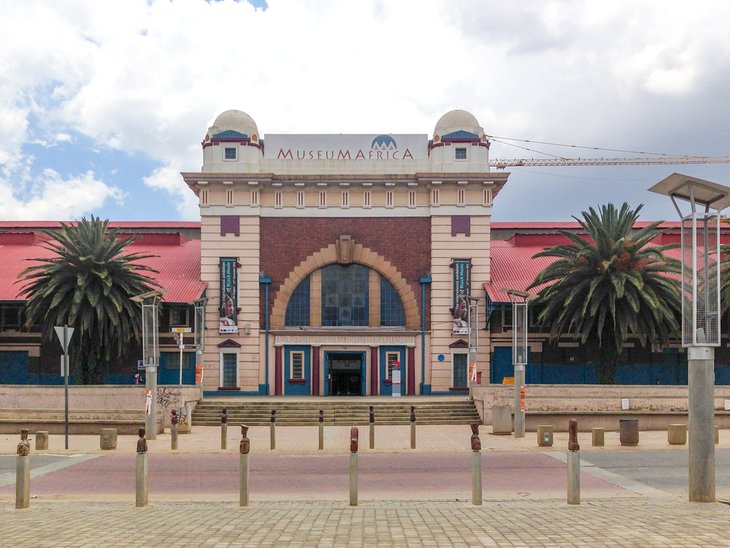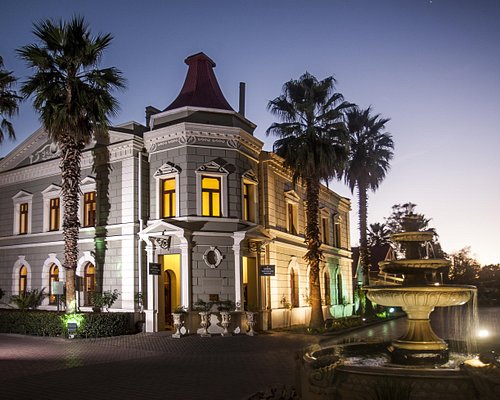The Basic Principles Of Johannesburg North Attractions
Wiki Article
Rumored Buzz on Johannesburg North Attractions
Table of ContentsThe Best Guide To Johannesburg North AttractionsJohannesburg North Attractions Fundamentals ExplainedAn Unbiased View of Johannesburg North AttractionsThe Best Guide To Johannesburg North AttractionsJohannesburg North Attractions - The FactsThe Best Guide To Johannesburg North Attractions
The city owes its area to the presence of a much more valuable source: gold. The city grew on the side of the Witwatersrand Key Coral reef, a below ground stratum of gold-bearing quartz-silica corporation that arcs for thousands of miles below the Highveld. Many of the gold mines in the city ceased operation in the 1970s, yet in its day the Witwatersrand gold sector accounted for greater than 40 percent of the globe's yearly gold production.Johannesburg has a temperate climate. The city enjoys about 8 hours of sunshine per day in both wintertime and summertime.
What rainfall the city obtains falls practically solely in the summer season, usually in spectacular late-afternoon electric tornados. Air contamination positions a significant problem, specifically in the cold weather, when thermal inversions hinder the westward circulation of air from the Indian Ocean. Pollution is most extreme in the densely worked out Black areas on the city's periphery, where many homeowners still rely upon coal for fuel.

The 9-Minute Rule for Johannesburg North Attractions
The equilibrium of the city is inhabited by whites. Lodging varies in personality and high quality.Physical development, although rather restricted by transportation, proceeded promptly as immigration to South Africa, and Johannesburg specifically, increased significantly. This problem was addressed in the 1930s when the car was introduced in mass production to South Africa. Cars were, generally, restricted to the wealthy, and allowed them to relocate to the north of the city and commute into the centre.
The majority of inadequate suburban areas were combined, with inadequate blacks and whites cohabiting, although the affluent suburban areas were generally reserved for whites. This altered with the political election of the National Party in the 1948 political elections, that began to formalise the system recognized as racism. Racism formally assigned which residential areas each race might stay in under the Group Areas Act.
The previous system of eleven numbered regions was reorganised in 2006. Marshalltown, as seen from the top of the Carlton Centre. The M1 and M2 run behind the buildings, and the southern suburbs extend past the highway boundary. The central city of Johannesburg lies within the city's Region F. The estimated populace of the continue reading this region is 200,000, [] yet the number of individuals living in the central city on a casual basis is unidentified, as many are illegal aliens. The majority of higher-income homeowners and white people have relocated to the northern residential areas and have actually been changed by lower-income black people. The unemployment, education, and age accounts of the location are you can try here all unidentified, because of the problem of obtaining reliable details concerning the location.
Indicators on Johannesburg North Attractions You Need To Know
Centred on the CBD, the region consists of the residential areas of Yeoville, Bellevue, Troyeville, Jeppestown, and Berea to the east. To the west it infects Pageview (Johannesburg North attractions) and Fordsburg. There are small industrial parks to the south, such as City West-Denver and Benrose. Around 800,000 commuters go through the inner city on a daily basis, and it works as a local purchasing node for site visitors from the southerly suburban areas. Yeoville and Bellevue have a mix of apartment buildings and solitary residential units on little whole lots. The area is situated on a mountainous divide that runs from east to west.
Johannesburg Stadium, a training ground for both the Golden Lions and Orlando Pirates, is surrounding. The eastern residential areas of Johannesburg are situated in the city's 7th [] and 9th [] regions. The location is likewise functionally incorporated with East Rand boundary towns beyond the main boundary of Johannesburg, such as Bedfordview and Edenvale (both part of Ekurhuleni Metropolitan Community).
The smart Trick of Johannesburg North Attractions That Nobody is Talking About
The eastern suburban areas are some of the earliest locations of Johannesburg, there are large communities of Jewish and other European histories, the bulk of the population is English speaking. There are three golf programs as well as a number of secured ridges with viewsites.The location is mostly composed of old "matchbox" houses, or four-room homes constructed by the federal government, that were developed to provide inexpensive holiday accommodation for black employees throughout apartheid. Soweto is an abbreviation, standing for "South Western Townships". Street after road around is lined with matchboxes; however, there are a few smaller areas where prosperous Sowetans have built homes that are a lot more comparable in stature with those in more upscale suburban areas.
Hostels are one more popular physical function of Soweto. Originally developed to house male migrant workers, numerous have been enhanced as homes for couples and families. The N1 Western Bypass skirts the eastern boundary of Soweto. The suburb was not historically allowed to create work centres within the location, so mostly all of its residents are commuters to various other components of the city.
Excitement About Johannesburg North Attractions
The household areas in the northern residential areas are generally official, with no substantial areas of informal housing, or housing that does not have an irreversible framework. This is a recognized area, there is a pattern of land use change from residential to industrial, specifically along major arterial roads and around established nodes.The area is well linked to roadway networks, specifically along the north-south axis created by the M1 and N1. Roadways to the eastern and west are less well developed, why not try these out as there are no freeways travelling in that direction. Towards the northern boundary of the city, the thickness of development lowers, leaving huge locations of untaught land around Midrand.
The Greatest Guide To Johannesburg North Attractions
, which is situated on a hill forgeting the inner city and Hillbrow.Report this wiki page